
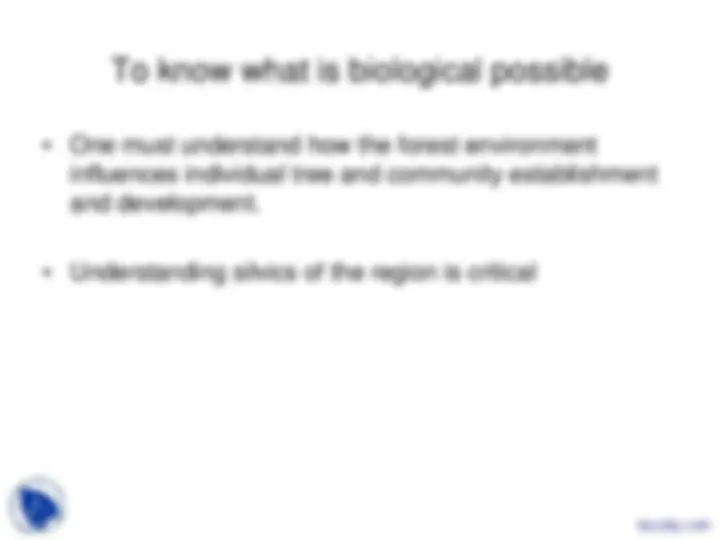
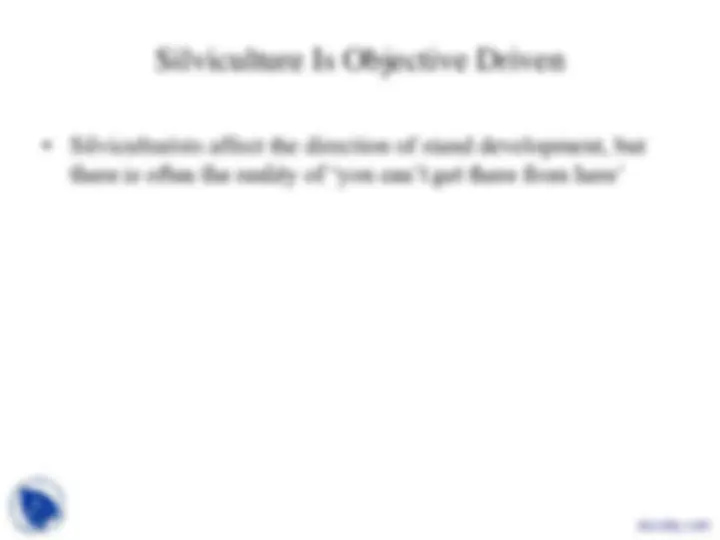
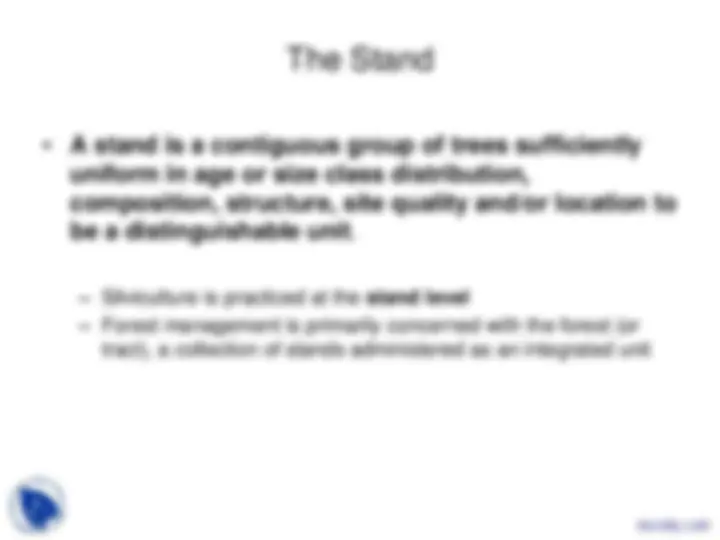
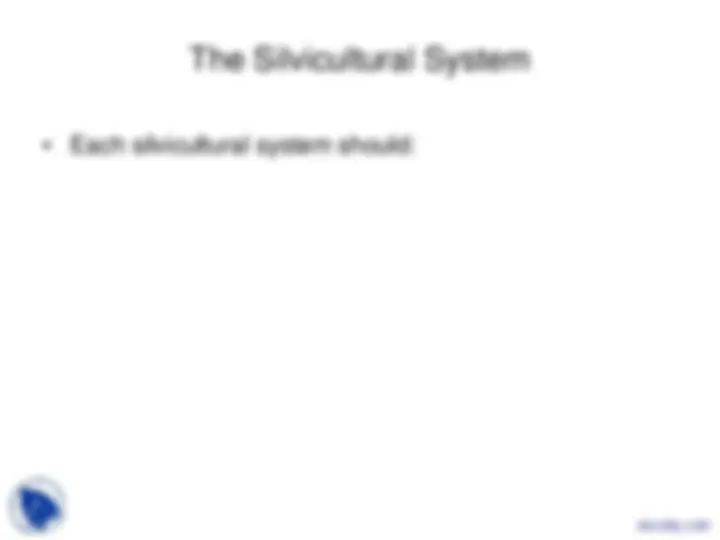
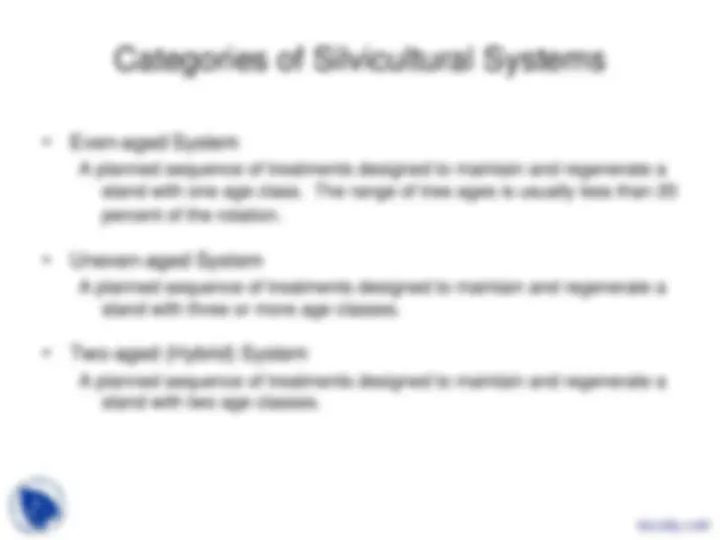
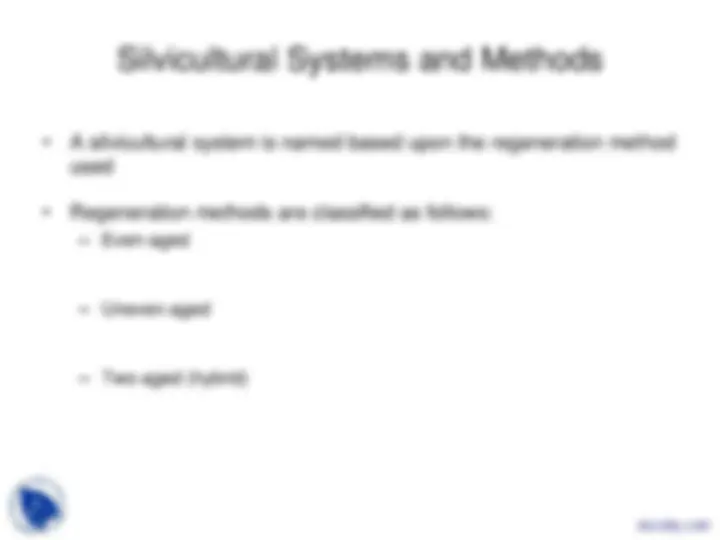


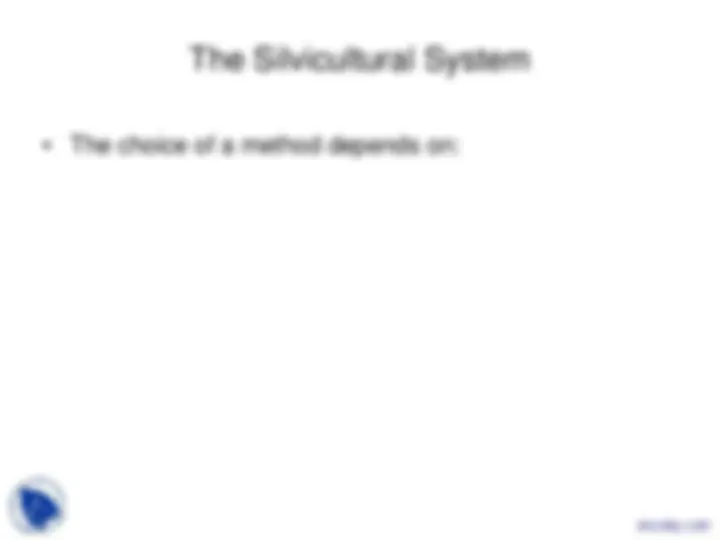
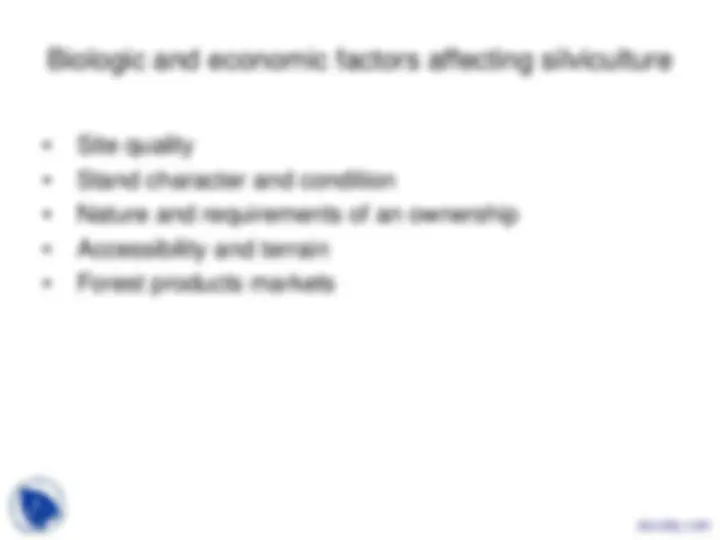

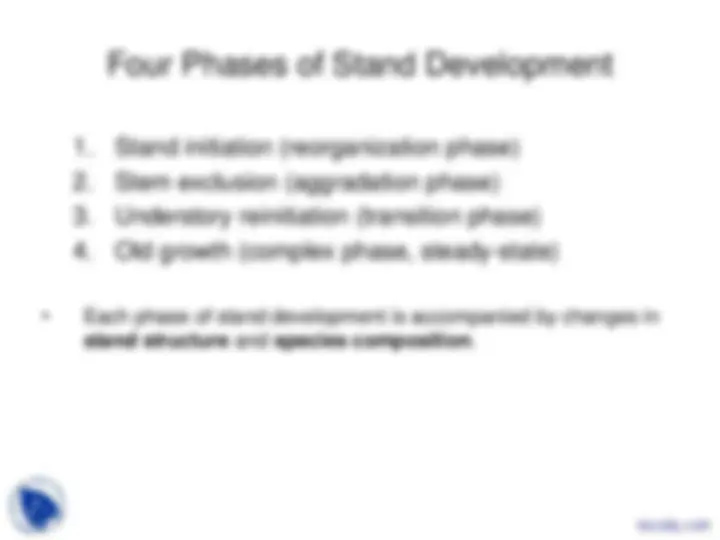
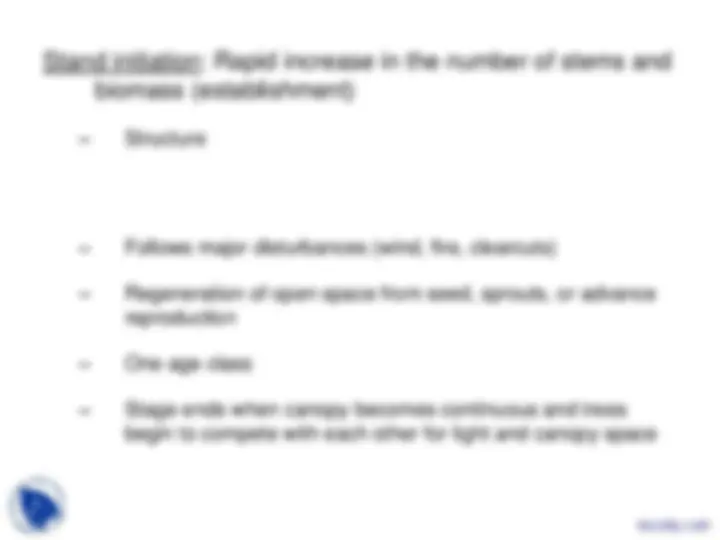
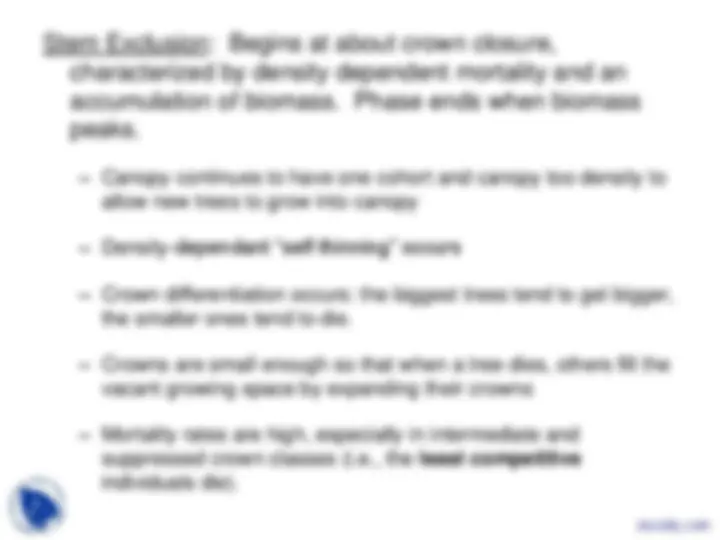
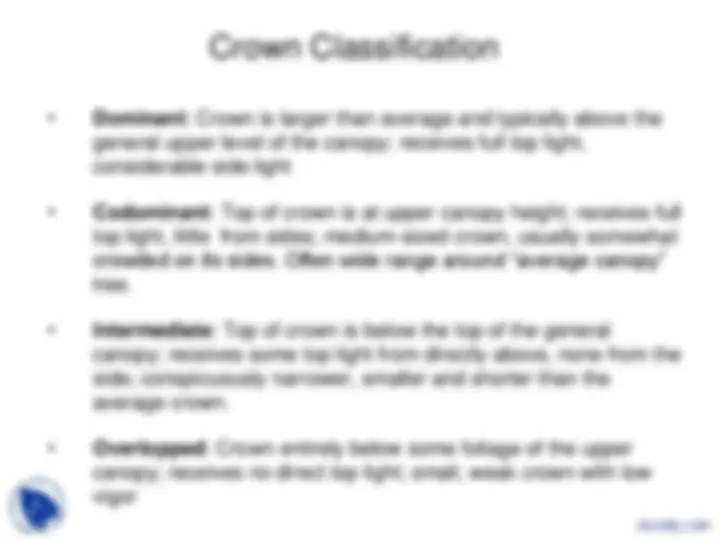
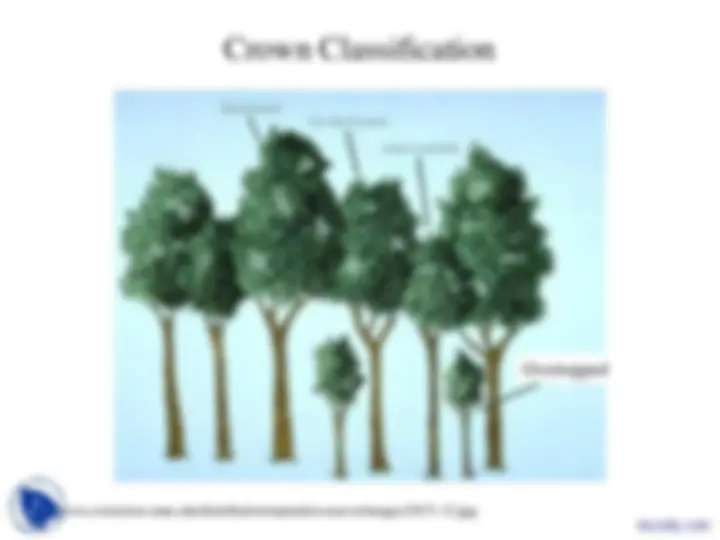
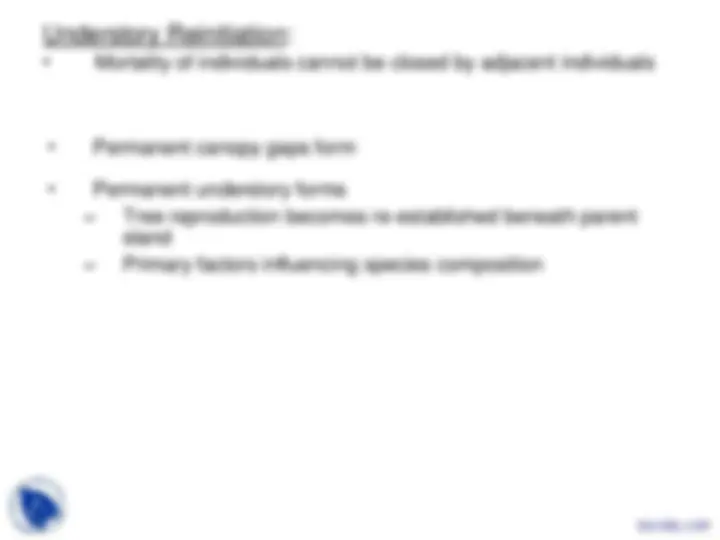

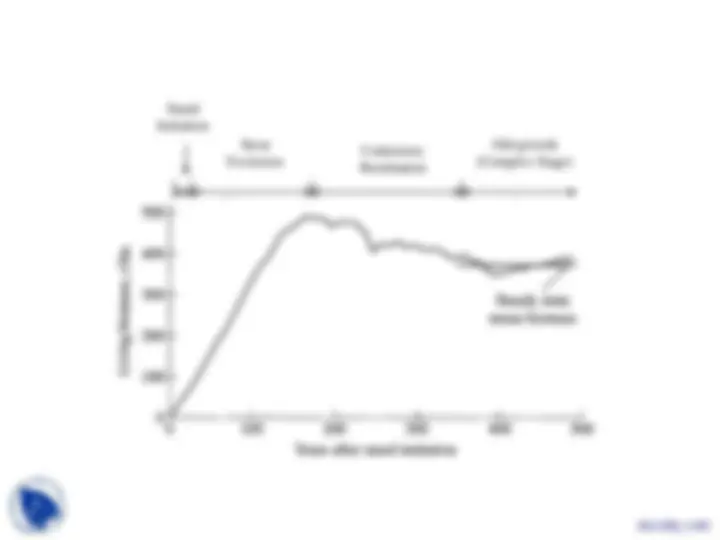

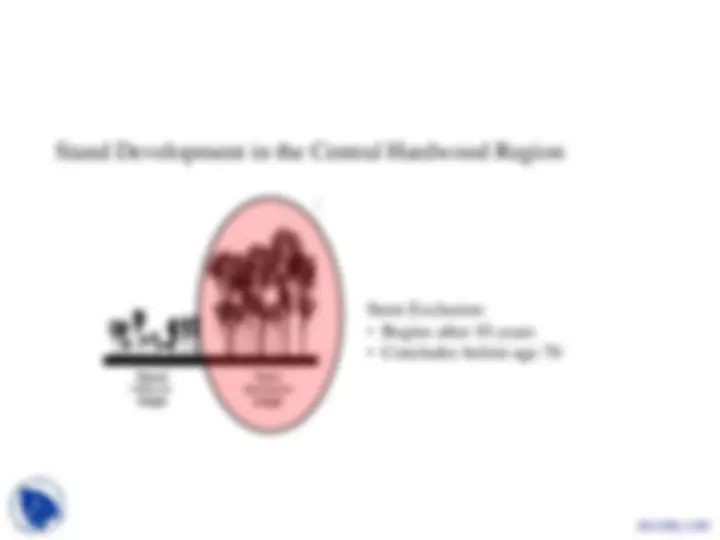
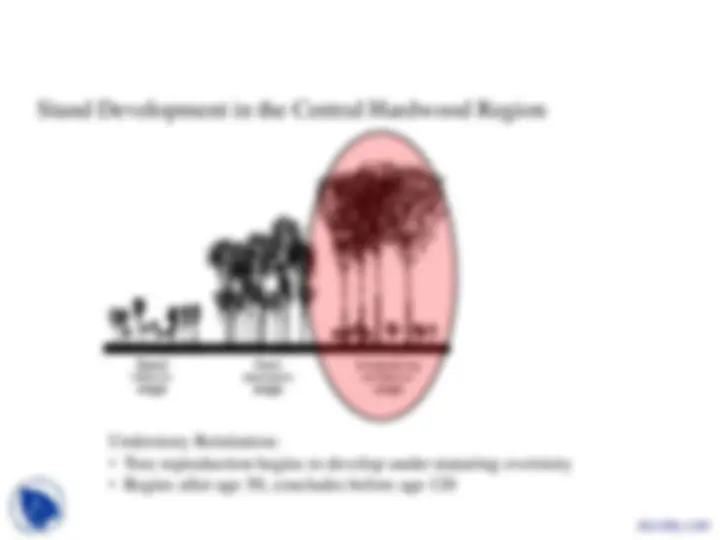
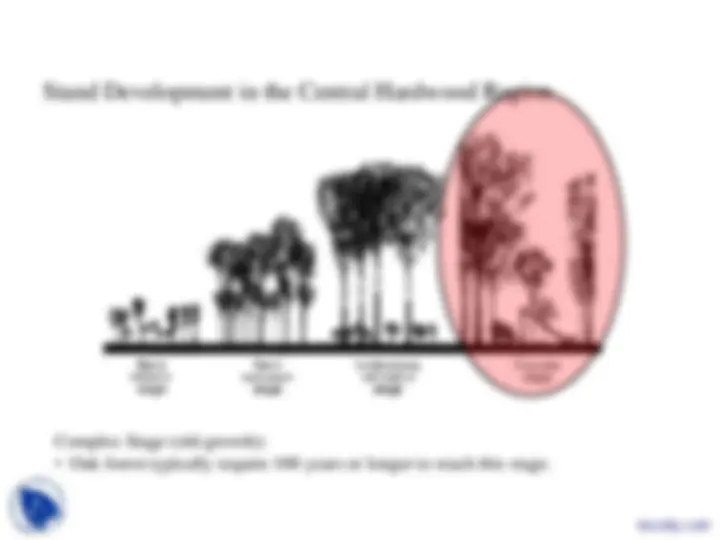
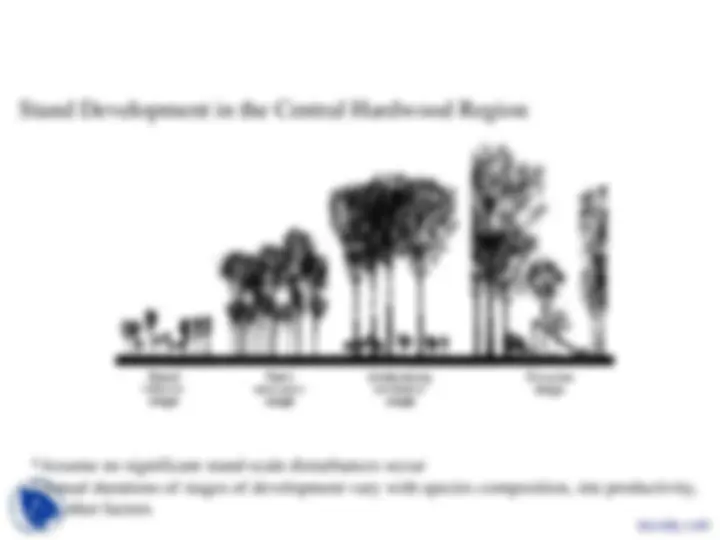


Study with the several resources on Docsity

Earn points by helping other students or get them with a premium plan


Prepare for your exams
Study with the several resources on Docsity

Earn points to download
Earn points by helping other students or get them with a premium plan
Community
Ask the community for help and clear up your study doubts
Discover the best universities in your country according to Docsity users
Free resources
Download our free guides on studying techniques, anxiety management strategies, and thesis advice from Docsity tutors
Silviculture course teaches how to develop and apply silvicultural prescriptions and learn the effects of these prescriptions on timber and non-timber forest benefits, forest health and biodiversity, soil, and water resources as well as their effect on broader social, economic, and ecological issues. This lecture keywords are: Introduction, Silviculture, Biologically, Economically Feasible, Stand, Silvicultural System, Categories of Silvicultural Systems, Silvicultural Systems and Methods, Phase
Typology: Slides
1 / 32

This page cannot be seen from the preview
Don't miss anything!

























Establishment
Benefits
Site Preparation
Benefits
Regeneration Methods